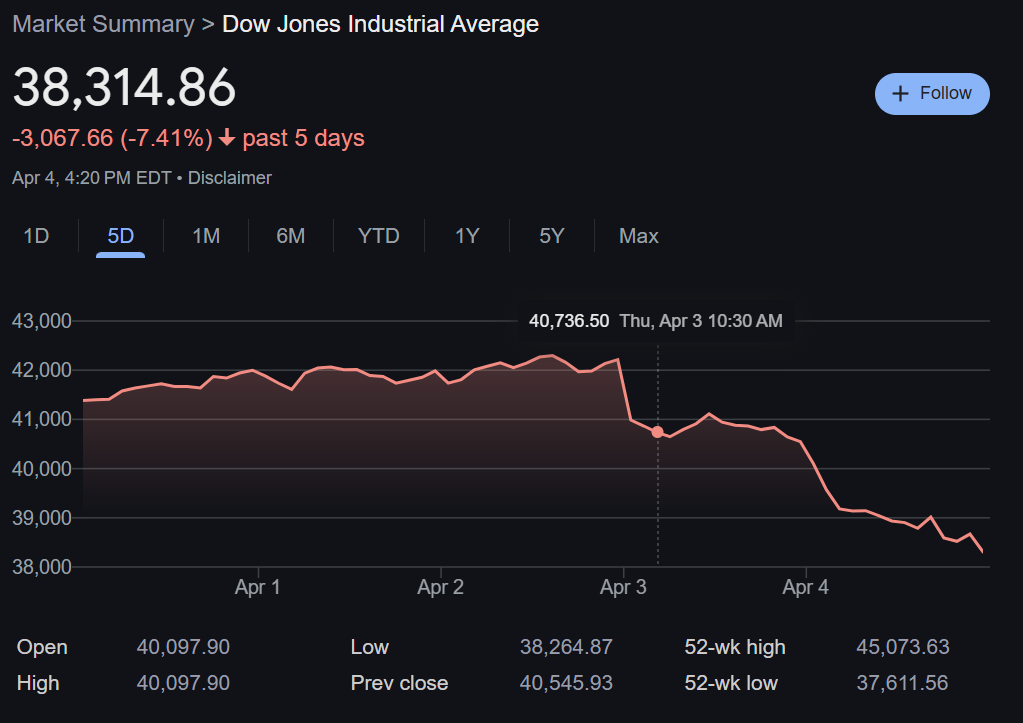April 4, 2025, has already carved its place in the annals of Wall Street history as a day when stocks took a nosedive, leaving both seasoned brokers and enthusiastic traders clutching their proverbial pearls. The uproar began when the Dow Jones Industrial Average plummeted over 2,200 points—about a 5.5% plunge that triggered alarm bells across the financial spectrum. Companion indices, the S&P 500 and Nasdaq, were not spared, falling nearly 6% each. The fiery dagger emanated from China’s newfound stance, introducing heavy tariffs on U.S. imports, stirring what can only be described as a global financial storm.
Given all these choppy waters in the realm of finance, you might wonder how an innocent trading card enthusiast, who’s content meticulously arranging their cards of Aaron Judge or Shohei Ohtani, gets caught in this maelstrom. The seemingly neoteric marketplace of trading cards has, over recent years, matured from simple collectors’ troves into a glistening marketplace where nostalgia meets new-age investment strategies. Iconic athletes turned demigods in cardboard form rife with glitter and guaranteed ROI have ever-so-smoothly transitioned from storing childhood memories to representing bona fide retirement plans.
Yet, with a market downdraft, spending in the discretionary sector inevitably shrinks. As purse strings tighten, cards that once soared to Olympian prices might descend, reflecting a potential shift not in their worth but in their perceived ‘affordability’ amid a general clasp. The spectacle induced by financial distress suggests that tighter budgets might lead to a tryst between the cards’ current value and upcoming reality, giving sleepless nights to collectors harboring memorabilia pegged at lofty prices.
But hold your horses. History has an eloquent way of looping back, and this time might just stick to its former script. With sprawling uncertainty, investors often don their Indiana Jones hats—embarking on treasure hunts for alternative investments. And here, nestled amidst this frenzied shamble, lie trading cards with their antiquarian allure and stately significance as tangible assets. Iconic slices of sports history in card form, especially the graded and limited-edition variants, line the shelves waiting—hoping for an upswing in their stature as plausible safe harbors of worth.
It’s baffling, almost poetic, how these cardboard muses become buoyant amid financial tempests. If past economic troughs like the Great Recession can teach us anything, it’s that culture pieces, from pillows of sports memorabilia to rare collectibles, have not only retained but oftentimes bolstered in value, enticing onlookers to a festooned flight of fancy. Cards may once again ride this speculative tide buoyantly, proving stalwart against economic upheaval.
However, collectors and aficionados shouldn’t expect a straightforward pathway. In the coming epochs—when financial dialogue predominantly centers around tit-for-tats between titans of industry versus entire economies—the trading card domain will stand at a peculiar yet pivotal crossroad. The intrinsic value of cards may fluctuate, swayed by economic voices and shifts in confidence.
For the enterprising collector or savvy investor, keeping one’s finger tightly wrapped around the pulse of economic indicators and adapting strategies in response to these changes could afford them an advantageous position. Whether the current market bonanza is a cursory hiccup or heralds a protracted shift likely dictating years of trading card policies is something only time will reveal. Until then, the task is to sail through this tempest on a trusty trading card boat.
With Wall Street staggering like a punch-drunk, the zeitgeist now teases of trials and treasures in equal measure for trading card enthusiasts. Most importantly, this ongoing financial whirlwind could very well sculpt avenues replete with opportunities, mostly for those who have the vision to read between the arcs of plastic encased treasures. This market melodrama might just underscore a buoyancy that only those who watch—wisely, with humor and patience—can truly appreciate. For in this chaotic ballet, trading cards might just end up as the prima ballerinas—a fascinating prospect in what remains a world of legendary unpredictability.

